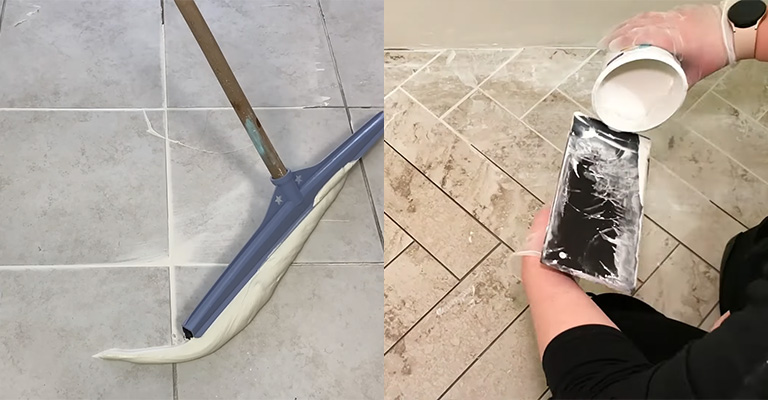Peel and stick tiles have become a popular choice for their ease of installation and ability to transform any space with minimal effort.
However, despite their simplicity, you may encounter situations where gaps and spaces are left between tiles during the installation process.
Don’t fret! In this guide, we’ll show you step-by-step how to fill in those gaps and achieve a flawless finish.
When you lay peel-and-stick tiles, there are often gaps along the edges. There are several reasons for this, such as uneven tile installation or improper bonding of the adhesive.
In addition to being unsightly, peel-and-stick tile gaps can even pose a tripping hazard. The tiles can also come loose over time due to this unsightly condition.
In order to maintain a smooth and easy-to-clean surface, you should fill in the gaps in your peel-and-stick tile.
It also prevents leaks and damage to the adhesive by preventing water from seeping through the cracks. But how do you fill in gaps in peel-and-stick tiles?
Your peel-and-stick tiles can be caulked with either clear caulk or a caulk that matches their color.
Here’s everything you need to fill your peel-and-stick tile gaps, including the tools and procedures you need to follow.
How To Fill In Gaps In Peel And Stick Tile?
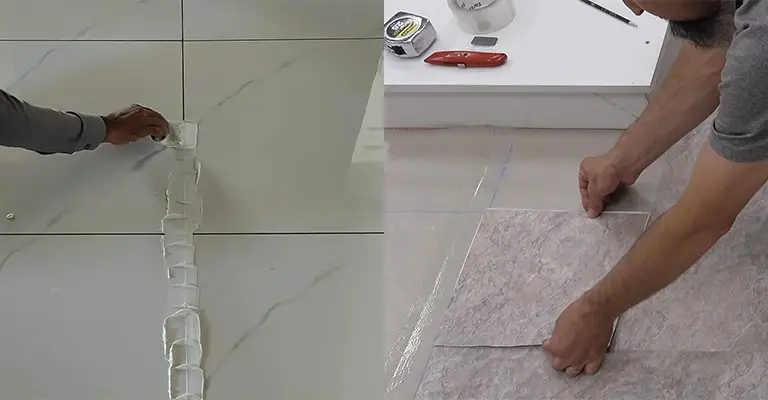
It is important to fill the gaps before installing a backsplash or wall tiling in order to make it look professional. Filling in the gaps between tiles may seem daunting at first, but it’s not difficult if you have patience and plan ahead.
It is essential to follow a systematic approach in order to achieve a professional result. Here are some tools you’ll need to get started:
- Clean, lint-free rags
- Caulking gun (optional)
- Caulk tube (color-matched or clear)
- Painter’s tape
- A straightedge
- A putty knife
Step 1: Prep the Area
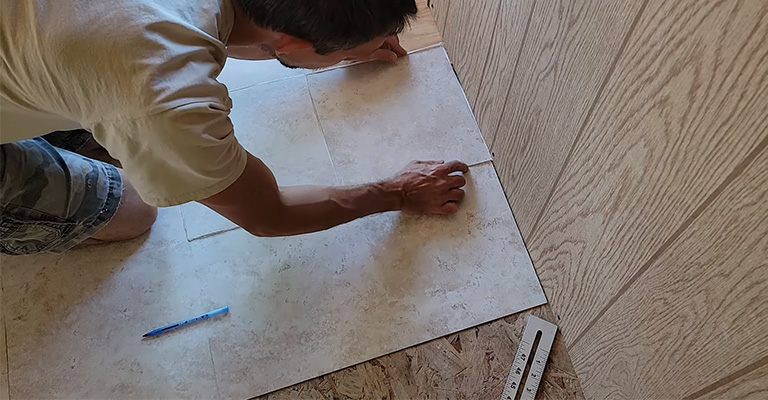
Preparing the area for caulking is the first step. With this in mind, you can ensure that your new backsplash looks its best and lasts as long as possible.
You should begin by cleaning out all rubbish from the gaps and joints, including dirt particles. If there is any loose caulk or trash inside the gap, you can scrape it off with the putty knife.
Make sure the surface is even by using a level. Fill in any bumps or indentations with self-leveling compound.
With painter’s tape, you’ll be able to make straight lines along the edges of your backsplash. Caulking will be easier if you follow this method.
Step 2: Cut the Tip of the Caulk Tube
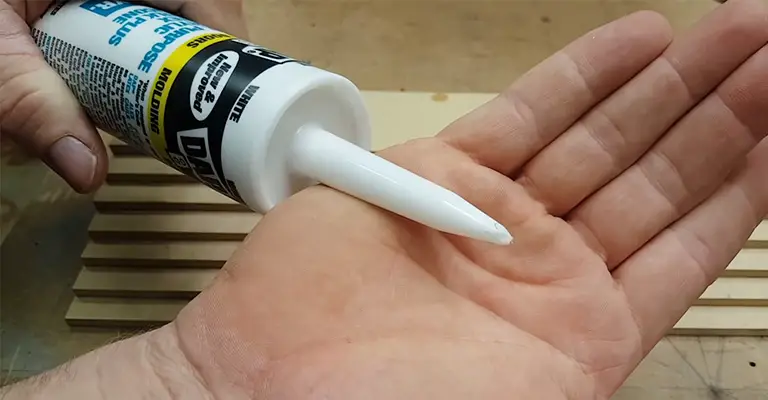
You should cut the tip of the caulk tube after preparing the area. The tip should be cut at a 45-degree angle.
This method will make it easier to apply the caulk evenly. Cut the tip of the caulk tip as small as possible to avoid making it difficult for you to control it.
This step can be skipped if you are using a caulk gun. Caulk tubes should be punctured before being inserted into guns.
Step 3: Apply The Caulk
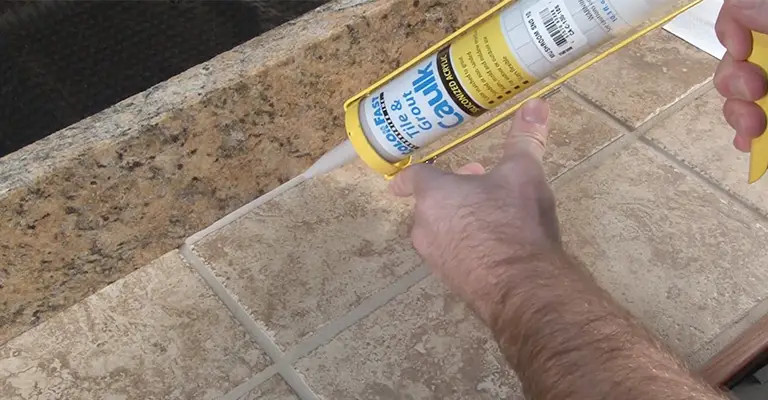
The caulk is now ready to be applied. Make sure you read the directions on the caulking tube carefully before you begin. A certain amount of caulk needs to be applied and allowed to dry.
The caulk should be applied from one corner to the other along the gap. Caulk tubes should be held at a 45-degree angle while being applied so the caulk is applied evenly.
A caulk gun should be used gently by applying gentle pressure to the trigger as you dispense the caulk.
Step 4: Smooth Out The Caulk
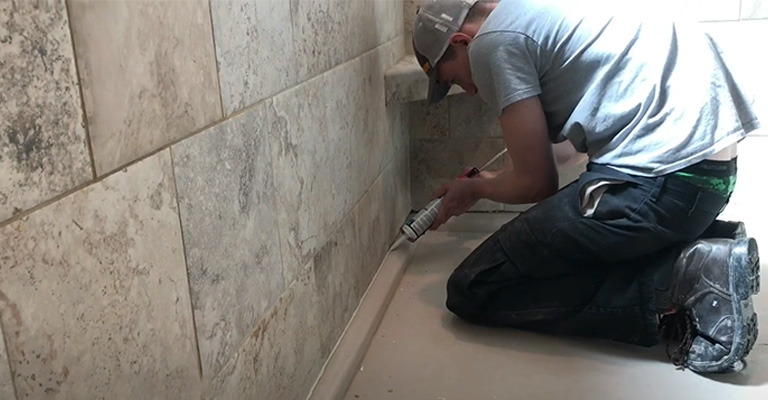
Using a caulking tool, smooth out the caulk once you’ve applied it. In order to do this, you should start in the middle of the gap and work your way outward.
Ensure you don’t apply too much pressure when caulking, or you will end up with messy, uneven results.
You should remove all excess caulk with the putty knife after reaching the edges. If the caulking job has any imperfections, you can smooth them out with the putty knife. Make sure to wipe the caulk away if it has contacted your tiles.
Step 5: Let The Caulk Dry
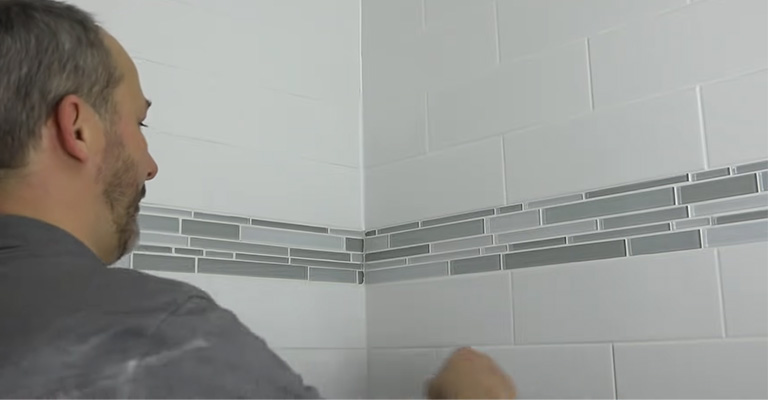
Before you move on, it’s important to let the caulk completely dry after you’ve filled in all the gaps.
It may cause problems down the road if the caulk isn’t applied properly. At least 24 hours are needed to allow the caulk to dry.
It is important not to touch the caulking or disturb it during this time. Following the 24-hour period, you can then begin tiling or installing your backsplash. Painter’s tape can be removed once the caulk has dried.
Is It Worth It to Fill In Gaps In Peel-And-Stick Tiles?
There are a few factors to consider when deciding whether to fill the tile’s gaps. Take into account how visible the gaps are. Depending on how small they are and how noticeable they are, you may not need to fill them in.
The gaps, however, may accumulate waste if they are large and pronounced. Filling them in is probably a good idea in this case.
Another consideration is the duration of the tile’s life. It might not be worth your time to fill in the gaps if you plan to replace them soon.
In case you intend to keep tiles for a long time, filling in gaps can help extend their life. Gaps tend to be more common in some types of flooring than others.
In contrast to laminate and vinyl floors, tile floors are most likely to have pronounced gaps. Filling gaps in vinyl tile floors is probably worth it if you are concerned about the gaps.
Can You Put Grout Between Peel and Stick Tile Gaps?
Filling in the gaps with grout may be a more permanent option if you are looking for a more permanent solution. Grout is used as a type of mortar to fill in gaps between tiles. To match your vinyl tiles, it is available in a variety of colors.
The process of applying grout is relatively straightforward. The first thing you need to do is caulk the perimeter of the area you want to grout.
The grout will not spread more than you intended as a result of this barrier. Once the grout is mixed, it should be applied in accordance with the manufacturer’s instructions.
After it has been mixed, apply it to the gaps between the tiles with a putty knife or other tool. Before the grout dries, wipe it away with a damp cloth. It is important to allow the grout to dry completely before using the area.
Are Liquid Nails Suitable for Peel-And-Stick Flooring Gaps?
There is a common misconception that liquid nails can be used for all adhesive needs, but this is not always true. There are some materials for which liquid nails are an effective adhesive, but they are not always a good choice.
Vinyl floors, for example, should not be treated with liquid nails. Liquid nails are not intended to provide permanent bonding for flooring, as they are designed to secure wainscoting, cabinetry, and baseboards in place.
The vinyl can become damaged if the adhesive becomes dry and cracked over time. Vinyl flooring can be temporarily held in place by this solution until a more permanent one can be found.
The gap should only be filled in where it is most severe if you choose to use liquid nails.
Liquid nails are not the best choice for sticking vinyl floor tiles if you’re looking for a long-lasting adhesive. Consider using a product that is specifically designed for this purpose instead.
What Is the Lifespan of Peel-And-Stick Floor Tiles?
A popular choice among homeowners is peel and stick floor tiles because of their durability and ease of installation.
There are several different types of vinyl tiles, with their lifetimes varying based on the quality, how well they were installed, and how much foot traffic they receive.
It is possible to extend the life of vinyl floor tiles by taking good care of them and maintaining them properly.
They can, however, become worn and brittle if not properly cared for. Regular sweeping or vacuuming will prolong the life of peel-and-stick floor tiles.
A mild cleaning solution should be used on them occasionally as well. You can also extend the longevity of vinyl tiles by regularly checking the gaps between them and resealing them if necessary.
Why Does Peel and Stick Tile Have Gaps?
The ease of installation is one of the main reasons why people choose peel-and-stick tile.
Peel-and-stick tile can be applied directly to a surface, unlike traditional ceramic tile that requires mortar, grout, and other materials.
Peel-and-stick tiles have been reported to not lay flat, causing unsightly gaps between them. This could be due to a number of factors. Among the most common are:
The Room Is Too Humid
It is possible to experience gaps between tiles if the room you are tiling is too humid, causing the adhesive on the back to become less effective.
Use a dehumidifier if necessary to prevent this from happening. Install the tile in a well-ventilated room.
There’s Too Much Adhesive
A tile that has too much adhesive on the back can lift up and leave gaps if there is too much adhesive on the back. You can prevent this by carefully following the instructions provided by the manufacturer.
It is usually necessary to peel away the adhesive backing from peel-and-stick tiles before installing them. The tile won’t lay flat if you don’t remove this backing.
The Tile Isn’t Cut Correctly
If the vinyl tiles are not cut correctly, there may be gaps between them. This is why you should make clean, straight cuts with a sharp utility knife when tiling.
You should also carefully follow the instructions provided by the manufacturer. It may be necessary to trim some tiles before applying them, while others can be applied without trimming.
The Surface Isn’t Completely Level
Tiles won’t lay flat when they’re applied to an uneven surface. There is a tendency for floors to settle in older homes, resulting in uneven surfaces. Prior to applying tile, level the surface first.
Final Words
With this knowledge, you know how to fill gaps in peel-and-stick tiles. Your floors can be kept looking great with a little effort.

